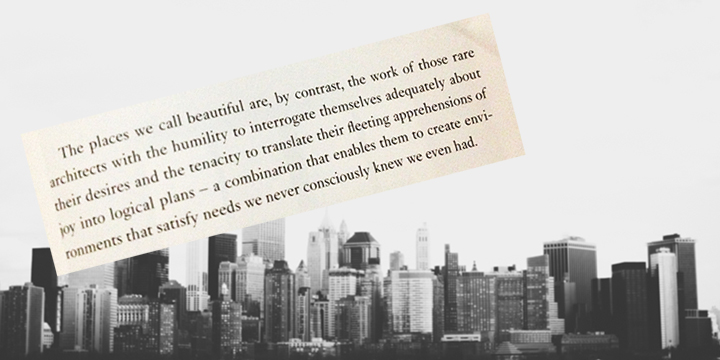 I just finished reading The Architecture of Happiness (quoted above) in an architecturally acerbic city. Remember my first impressions of Ulaanbaatar post where I waxed poetically about how it wasn’t a wasteland? Well, I must have been viewing it with my rose colored Russian glasses, because guess what? It is a wasteland. We now know more about Ulaanbaatar than we ever wanted to know. The infrastructure is poor, the traffic is awful, the architecture (if you can call it that) is not cohesive or aesthetically pleasing, and after being witness to a disturbing incident in a parking lot, we realize the city is probably rampant with corruption.
I just finished reading The Architecture of Happiness (quoted above) in an architecturally acerbic city. Remember my first impressions of Ulaanbaatar post where I waxed poetically about how it wasn’t a wasteland? Well, I must have been viewing it with my rose colored Russian glasses, because guess what? It is a wasteland. We now know more about Ulaanbaatar than we ever wanted to know. The infrastructure is poor, the traffic is awful, the architecture (if you can call it that) is not cohesive or aesthetically pleasing, and after being witness to a disturbing incident in a parking lot, we realize the city is probably rampant with corruption.

So I finish this book, which explores what our surroundings do to us, and I realize why I am so eager to get the heck out of here. Don’t get me wrong, Mongolia is amazing, but it’s very much a duplicitous country. It’s when you leave Ulaanbaatar that Mongolia becomes a magical place. The countryside is beautiful, the city just a holding cell.
So what does being exposed to a chaotic, ugly city do to one’s happiness?
Chaotic I can somewhat deal with, hence my ability to live in New York City, but at least the big apple has some pretty beautiful sites. You can be bombarded with complete chaos, want to crawl in a hole, swear you are quitting NYC and then look up and see the lit Empire State Building (or my favorite, The Chrysler Building), and suddenly you are in love with NYC all over again. Ulaanbaatar affords you no such experience. You can be so annoyed with the traffic, unable to breathe the dusty air, hope you are wearing appropriate shoes to trek through the haphazardly torn up sidewalks with exposed pipes and whatever else, want to get on a plane, and then you look up, find another torn up ditch that you have to jump across, and then really want to get on a plane. Ulaanbaatar doesn’t make you fall in love again. It makes you want to break up with it.
I’m a big believer that the external permeates the internal and just like the traffic I’m beginning to feel a bit congested. I finished the book at a time when I was so over Ulaanbaatar. Feeling trapped just waiting to make use of our plane tickets to India. I felt my first wave of New York miss and travel blues while cabin fever was setting in. But maybe my own architecture of happiness was being heavily swayed by Ulaanbaatar’s architecture of unhappiness? The book in some way made me realize my own sensitivity to aesthetics.
All this time I thought I was the sole architect of my own happiness, not realizing that perhaps my surroundings act as my subcontractors. Once I realized it’s not all internal and that the external is at work too, I felt relieved to know that my limp arches were probably a product of peripheral woes. Phew. Get me out of here!
Now India, am I going to fall in love with you or want to break up with you?